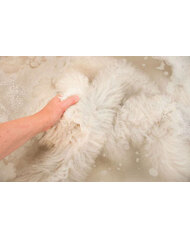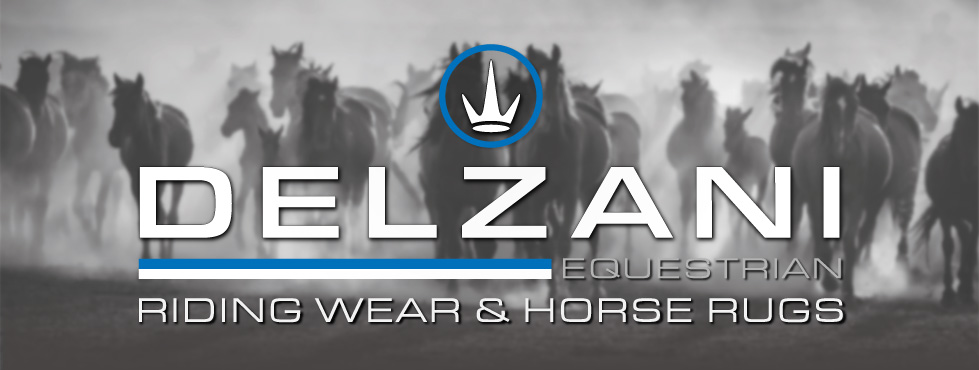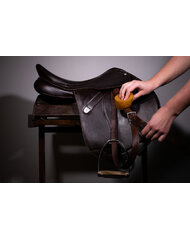Wash Guide - Sheepskin

We all love the benefits of a good sheepskin numnah or saddle pad. They are a costly investment – and many people don’t realise they need special care to get a long life from the sheepskin.
If you only take one piece of information away from this care guide - always allow your sheepskin products to air well immediately after use if they have become damp or wet. (either from washing or sweat)
Horses' sweat is caustic, if a product is put away damp with sweat, it will react with the sheepskin and accelerate the breakdown of the sheepskin. If you neglect drying and airing the pad after use, especially brushing out dirt and grime, the reactive process can get underway quickly depending on how damp it’s left, the acidity of the sweat, the level of dirt/grine and average air humidity levels, can all interact and start a fast reaction that can rapidly rot the leather in a few months. Often we don’t notice this until the leather/sheepskin literally disintergrates and falls away.
Follow these simple tips to get a long life from your sheepskin:
- Keep washing to a minimum. Constant washing will remove oils from the leather, and create brittle leather. Avoid hot water, (stay under 30c) We prefer hand washing over machine washing. Use a detergent designed for wool. (Avoid regular washing powders which nearly all contain enzymes or bleach. These enzymes break down the leather.)
- Sheepskin products must be allowed to dry between uses so that the sheepskin is given a chance to stabilize. Once the pad is dry, a light brushing of the sheepskin with a pet brush will separate the wool fibers and help to keep the wool fluffy and resilient for the next use.
- Sheepskin products should be line-dried out of the sun. Please do not put them in a warm dryer or on a heating device. Putting it in the dryer on a cold setting is better for the leather than letting it dry on its own, as it fluffs the air through and keeps the fibers from drying out and going hard
- When storing, turn upside down on your saddle - sheepskin facing up to breathe.
Leave a comment
Related Equestrian Guides
Horse Riding Numnahs & Saddle Pads
Protect your horse’s back with Australia’s #1 saddle pads & numnahs. Sheepskin, gel, and shim half pads breathable comfort, balance & style.
How to maintain your saddlery leather
Cleaning tack is admittedly not something we like to spend our spare time engaged in, but it is necessary nonetheless and a little knowledge can go along way to get the best life from your leather.
Do Half Pads Really Help? A Rider’s Guide to Comfort, Saddle Fit and Performance
Sheepskin numnahs and half pads improve comfort and saddle balance for Australian riders. With natural wool, spineless designs, and shim options, they protect backs, smooth pressure, and keep good saddle fits feeling consistent.
Numnah Half Pads: Practical Solutions for Saddle Fit Problems
Find out how the right numnah half pad can solve slipping saddles, uneven pressure, and sweaty backs. From airflow sheepskin to shimmable designs, Delzani half pads give Aussie riders smarter saddle fit, comfort, and freedom in every stride.
Gel Half Pads: When Extra Grip and Shock Absorption Help (and When They Don’t)
Wondering if gel half pads are worth it? This guide explains when gel pads add grip, shock absorption, and comfort, and when they can actually cause problems. Learn how to choose the right gel half pad for your horse in Australian riding conditions.
Dressage Shim Pads: How Micro Adjustments Improve Balance, Comfort and Performance
Dressage shim pads help fine-tune saddle fit, balance, and comfort. With lambswool for breathability, spineless designs for freedom, and adjustable shims, they support topline changes, rider balance, and performance in Australian conditions.












